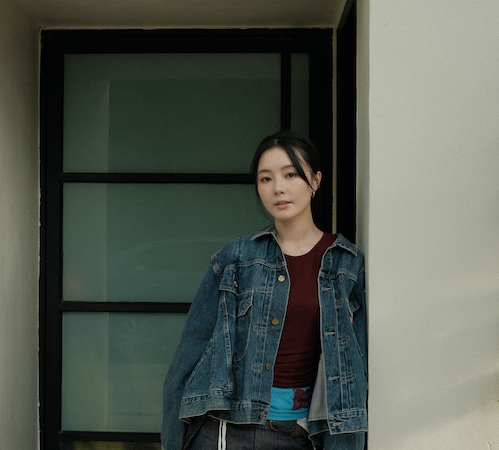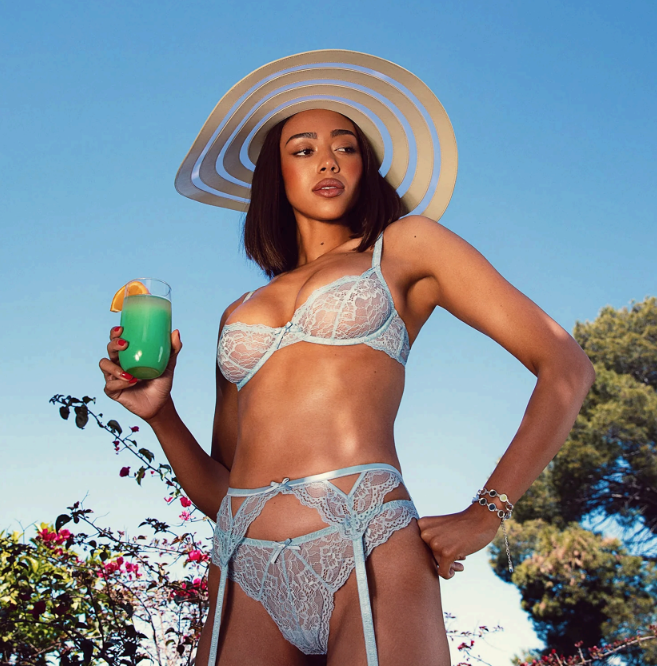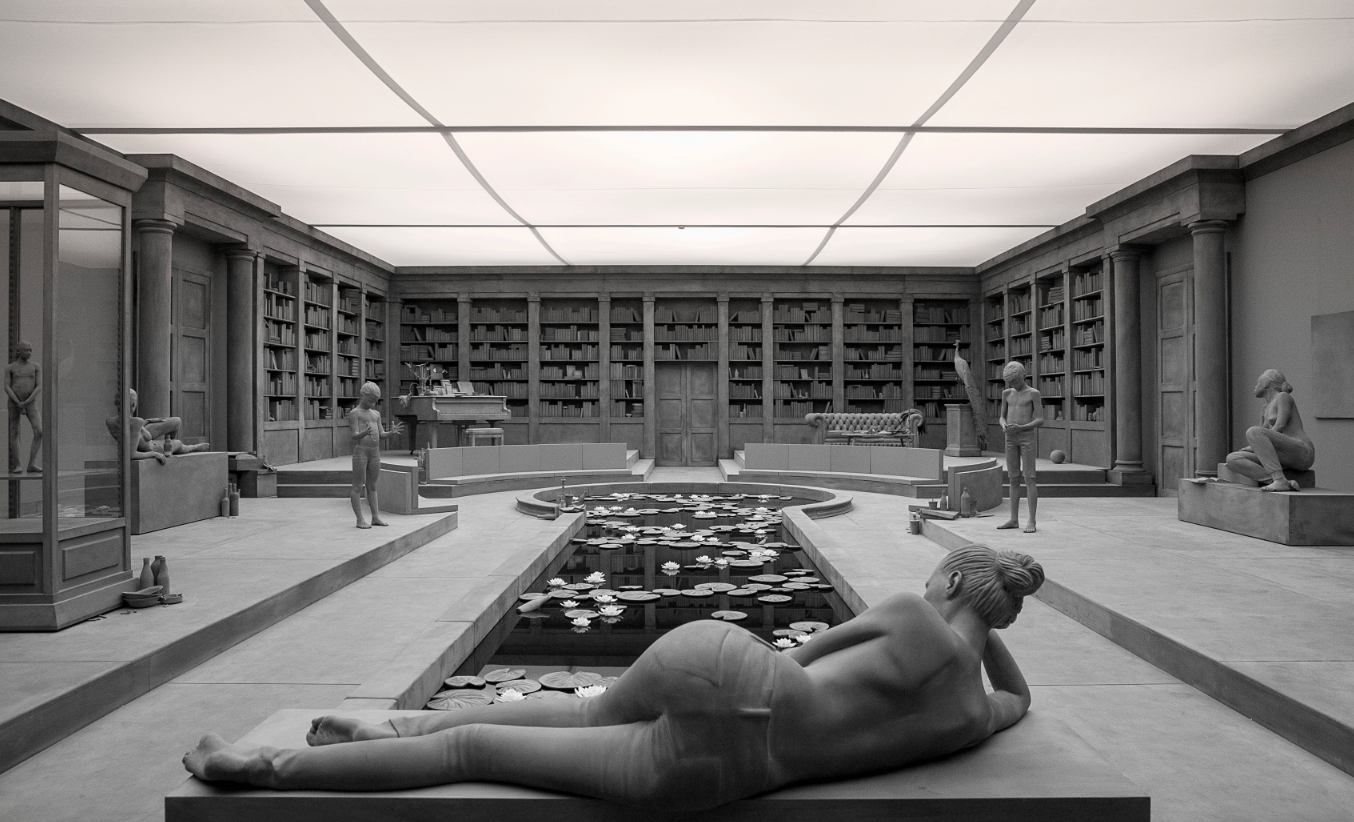Have you ever wondered who’s buying up all the art being displayed at Hong Kong galleries and art fairs, or considered joining their ranks? Prominent local collectors Henry Chu and Muddy Water talk to Jaz Kong about their journeys and reveal the approaches, passions and philosophies that have shaped their distinctive collections and contributions to the city’s cultural landscape
Henry Chu, digital artist, programmer, designer and founder of digital design studio Pill & Pillow
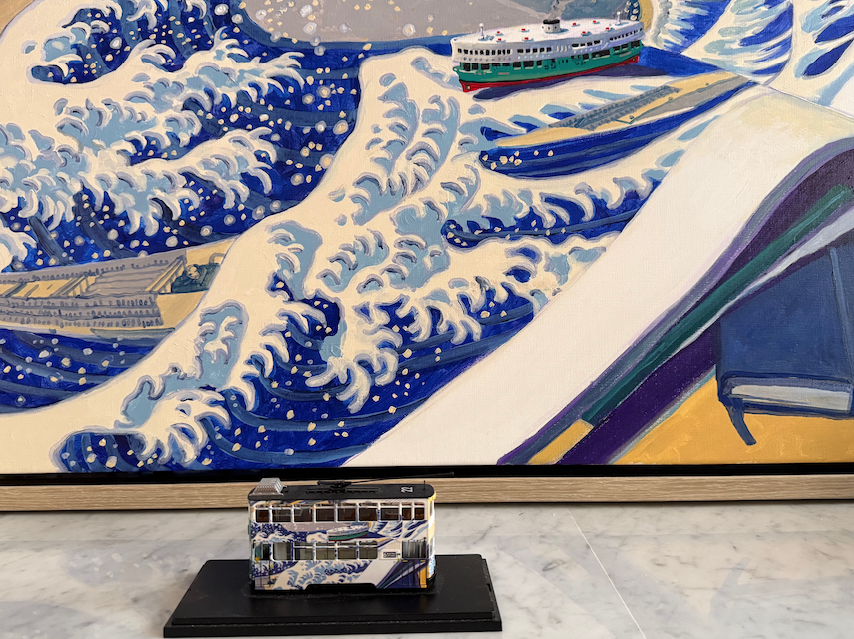
Artist, designer and business owner Henry Chu knows how to live a balanced life, and how to elevate it. He goes to the office to design and work on his art in the morning, then drives to a nearby wet market to check out the fresh produce and seafood, drives back home to make lunch, and eventually goes back to the office. Sometimes he works late and sometimes he attends gallery openings in the evening.
Stepping into Chu’s office (and part gallery and storage space), what first catches my eye is a 10-year-old watercolour painting by local artist Stephen Wong Chun Hei and a still-bubble-wrapped work by Mak2, both very hot names in the local primary and secondary markets. Chu says his collecting has run parallel to his own journey as an artist. “I think I started collecting around Covid, when I learned to work on my artistic side more systematically. That’s when I started to pay more attention to studying local artists too,” he explains. “As an artist, I’m curious about the mentality of buyers, and wonder who would collect my art. Hence, with the money from selling my works at the Digital Art Fair, I wanted to develop myself as a collector to learn about this side of the market, as well as to support Hong Kong artists.”
Of the local artists he collects, Chu considers himself as a fairly important collector of Stephen Wong Chun Hei – not because of the quantity of pieces but the quality. “I’ve supported Wong for over 10 years now,” says Chu, whose first acquisition was a 2014 watercolour created in the artist’s previous style. Then Chu acquired The Star Ferry in the Wave, one of Wong’s most iconic pieces, which was selected to adorn trams throughout the city promoting Art Basel Hong Kong 2022.
Another notable work in his collection is the The Study of the Sky series from 2018, where Wong observed and painted the sky every day for an entire year. This series reflects Chu’s collecting philosophy. “First of all, it has been a healing process for the artist, and an important work for him too as he drew inspiration from [English landscape painter] John Constable. Another reason is this is hardly something replicable, and he most probably won’t do it ever again,” Chu says. He also takes pride in Wong’s A Grand Tour in Google Earth: Mount Akina. “I think he has done an impressive job because this looks even better than photographs,” Chu says. “It’s an iconic representation of Wong’s best period and his first try for such a dark painting.”
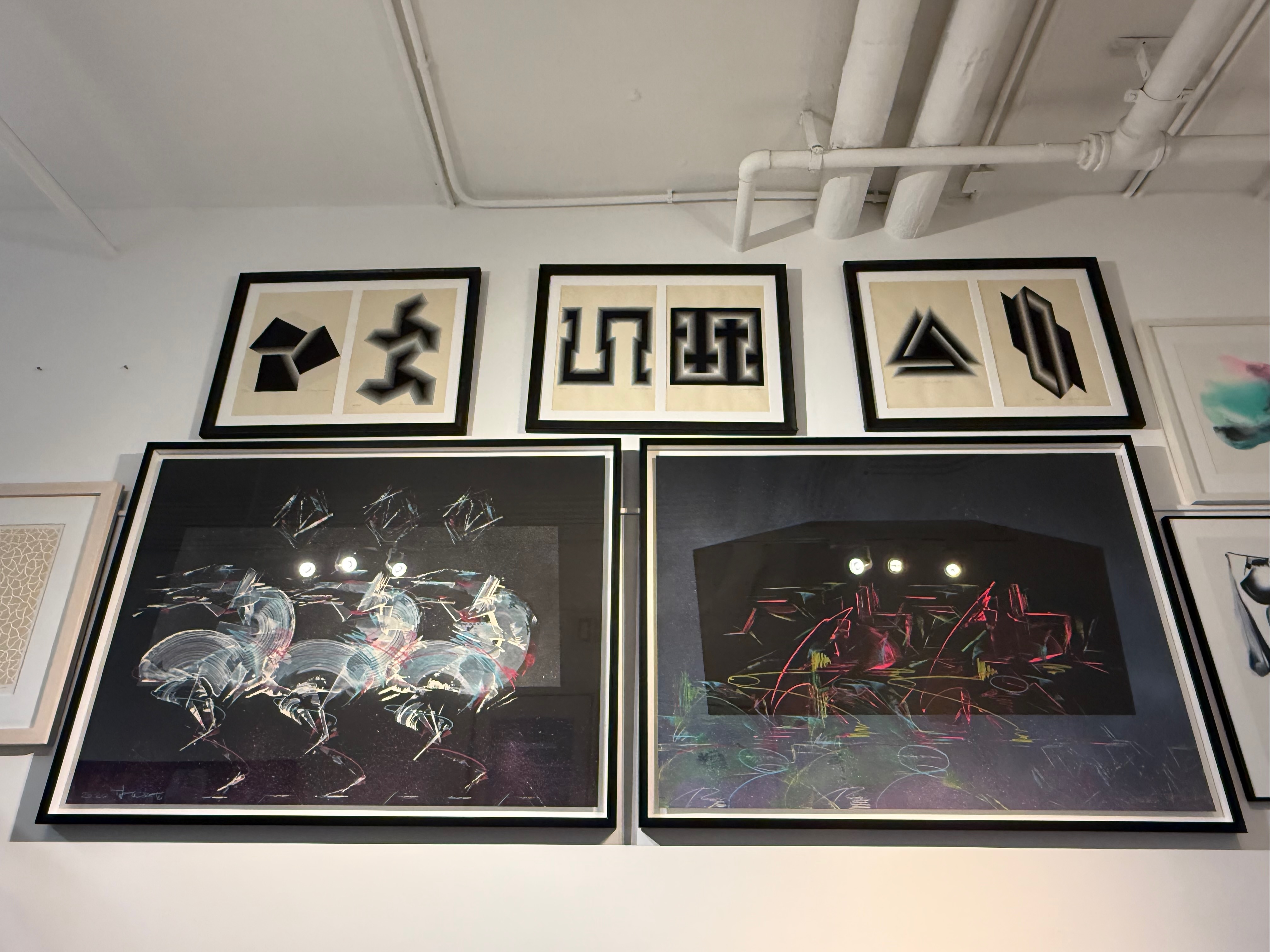
Although Chu is an artist himself, surprisingly, he reveals, “My knowledge of the art world came from collecting. Primarily as a designer, this knowledge is essential for me to be a better artist. Paintings are like portals; there’s our world and there’s the artists’ worlds. Only through the paintings can we enter theirs. Hence, paintings are windows and portals connecting the two worlds.”
This philosophy extends to his recent acquisition of the installation work, T(hey) by Tung Wing Hong, which was made with mannequin arms, kinetic devices, a carpet and a kinetic curtain. “I wish to support more digital and installation artists as well, because
I understand firsthand how these types of works are priced lower,” Chu says. “I think they are more difficult for Hong Kong collectors to buy, because of the lack of space and resale value. But I also buy as an artist to try to understand what buyers think.”
Looking at art from different perspectives clearly helps Chu in his creative process, both as a designer and an artist, but he can’t stress enough the differences between the two practices. “Designing is a rather ‘narrow’ path. In design, we only get a final ‘yes’ after thousands of ‘nos’; as for art, we may only get a ‘no’ after many ‘yeses’,” he explains. “Art means possibility, an opportunity to try new things. Everything seems probable in art creation. Creating art means to keep questioning ourselves, and to keep asking, ‘Why not?’ These are the major differences between design and art, hence my art collection is also a way to strengthen my aesthetics.”
Without an overriding theme, Chu describes his collection as a “salad” or “a plate of fried rice, using a more local context. Every ingredient goes well with the others and makes a unique combination.” However, the most important element of Chu’s collection is connection. “This is especially important for contemporary art – it may not be about whether the work is beautiful or well executed, but the ‘why’. A connection is a must. The story behind it has to be something we can both resonate with.”
Muddy Water, professional investor, author and business consultant
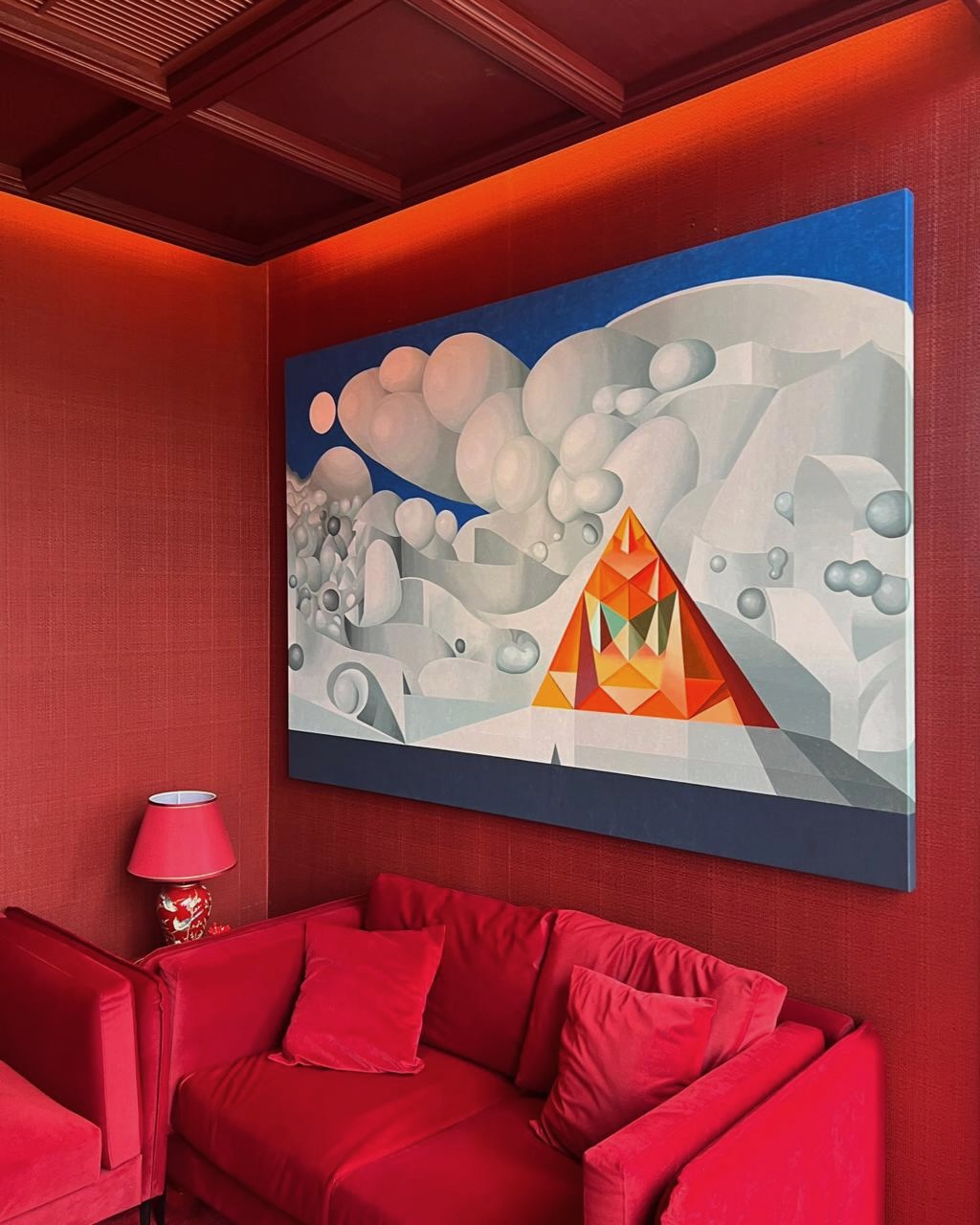
As an expert in economics, Stanley Wong, better known by his pen name Muddy Water, jokes that he’s rather silly when it comes to art collecting as most of his nearly 400 pieces – which he acquired over a mere five years – have a rather low resale value.
The first painting he acquired was by Jeremy Fung, in a gesture to support his friend around 2019. “It ignited my curiosity so I started to study this field,” he recalls. “The more I learn about the art world, the more I’m ‘trapped’.” He jokes that this expensive hobby has “burned” all his money, particularly as he refuses to use his calculative brain outside of work, which is heavily involved with investment.
“I don’t see art collecting as a numbers game, mostly because I don’t see a high resale value for the works, mostly by local artists, in my collection,” he explains. “I started out having a similar mentality as most Hongkongers – we dig local popular culture mainly because we were trapped in our city during the pandemic and had more time to explore the local world and the art scene.”
When it comes to collecting local artists, Muddy Water believes there is a higher purpose: “It’s my intention to support local Hong Kong artists. I don’t mean to be political, but the topic around Hong Kong identities has been on the radar. I do feel responsible to cherish and safeguard this historical moment. And I believe art is one of the ways to preserve Hong Kong identity. That’s why 80 to 90% of my collection is made up of local artists. Every single person in Hong Kong may have their own way to contribute to this matter – some listen to Cantopop, some watch made-in-Hong Kong movies. With a bit of spare money, I’m taking a step further to support the local art scene and to support the meaning of Hong Kong.”
Also see: Affordable Art Fair Hong Kong: What to keep in mind when buying art for your home
It’s rather tragic to keep artworks in storage after purchasing them, so Muddy Water finds ways to share them with the world. While he admits he’s not quite as experienced as Alan Lau, he’s more than willing to loan his pieces to various venues, events and exhibitions in order to promote Hong Kong and its artists. One example is the 2023 edition of Canto Yay, “a mini-festival of Cantonese culture” held in Kuala Lumpur. “I helped curate part of the arts exhibition, which the organiser themed ‘Hong Kong pop culture’, and I ended up displaying my collection of Albert Leung Wai Man, as well as Chui Pui Chee’s works, which were calligraphies of another lyricist, Wyman Wong.” Seen in the same show were works by Syan MC Yan, and the talk-of-the-town work by Oscar Chan portraying Cantopop boy group Mirror. Another Muddy Water collection on display is Jason Ho’s work at Red Room, the hidden speakeasy bar at K11 Musea. Muddy Water is an admirer of Lau, and happens to agree with Lau’s philosophy of art collecting. “I, too, believe that we are merely temporary custodians of the artworks. But my practice has been kind of laughable from an investment point of view, since I bought them at the highest price point,” he says.
That said, sometimes the artist’s story matters more than any investment value. Take [Burmese painter] Htein Lin as an example. “I bought his work exactly because of his story,” Muddy Water says. “There’s a [long-held belief] in Myanmar that women’s longyi (a sheet of cloth worn around the waist) are ‘dirty’ and a fearsome taboo that men who walk under them will be cursed. This superstition was used as a roadblock to slow down the army’s advance [with protestors hanging lines of longyi over roads after the military seized power in 2021]. As a social and political activist, Htein Lin was imprisoned, but that didn’t stop him from creating. He still made new works while jailed, all of which were about protest.” It was admirable to stay true to one’s course, especially for Lin, who created with needles, toothbrushes, lighters and even his own body, using white cotton prison uniforms as his canvas.
While diving into the deep end when it comes to local artists and taking risks from that perspective, Muddy Water doesn’t consider himself a hype-chaser. “I got an NFT from MC Yan, the one about the King of Kowloon,” he says, “but I still don’t believe it’s the future of art.” For now, he considers himself an impulse-driven collector with the important thing being “I love what I have, especially the local artists’ works”.


